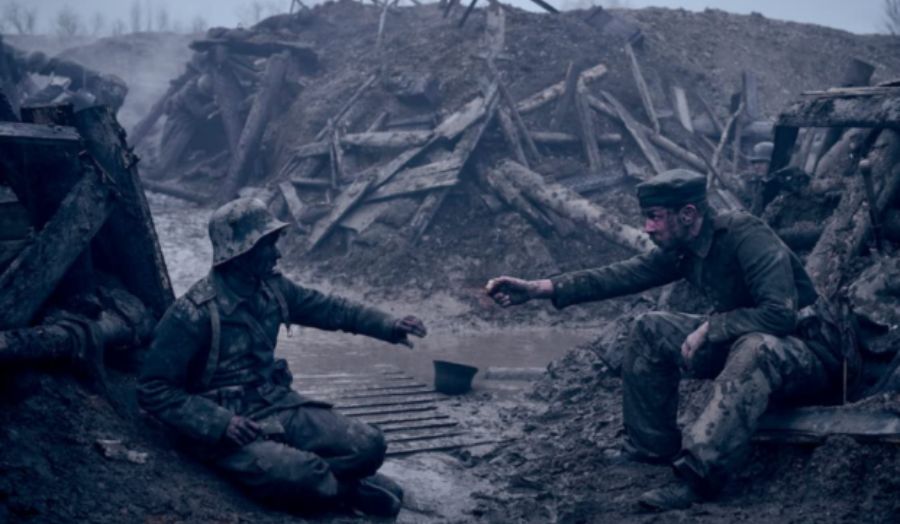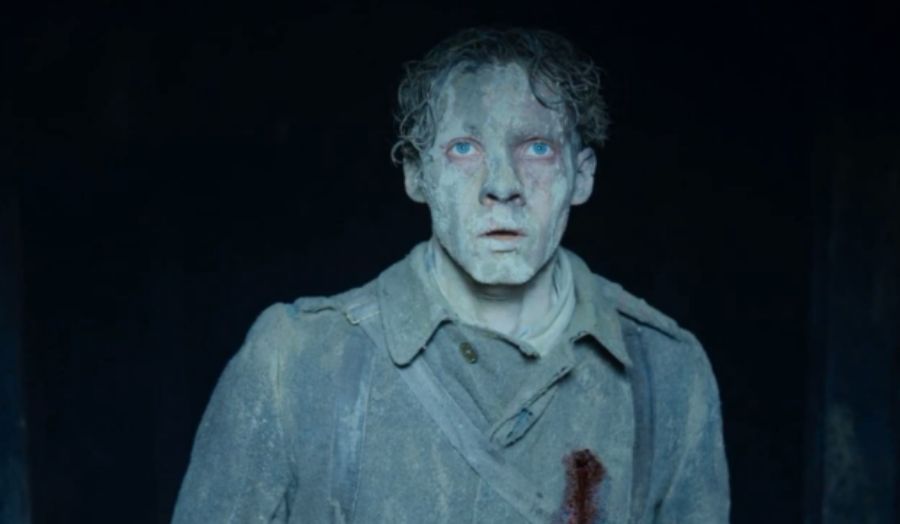This year’s underdog Oscars champion, All Quiet on the Western Front, has wowed the academy with it’s impressive storytelling and experimental score.
Edward Berger’s, German language, World War I epic, All Quiet on the Western Front, has won this year’s Oscar for best international feature and best score. The film is based on Erich Maria Remarque’s novel and a remake of Lewis Milestone’s 1930s adaptation. Berger has created a film that explores the fragility of life and the horrors of war. The film comes at a time of increased violence in Eastern Europe, and its anti-war message feels more important than ever.
Volker Bertelmann, better known as Hauschka, has pushed the boundaries of what is expected of a war film’s score. Bertelmann employed the use of his great-grandmother’s, turn-of-the-century harmonium, to help create the score. Bertelmann discussed his use of the harmonium with NPR, saying that ‘You could hear the breathing and the woodworking as a machine, and that whole thing is played through a distortion’. Bertelmann’s use of the distorted harmonium is eerie, the sound is something you cannot quite place, other and yet almost familiar.

Bertelmann’s score is boldly experimental, he uses the harmonium like a synthesiser, giving him the ability to make a sound that is both archaic and mechanic. The score sounds like it too is a machine of war, rather than the typical orchestral score. This emphasises the brutality of the machinery that came from the industrialisation of war. Bertelmann is not afraid of harnessing the low vibrational sounds of the harmonium, which reverberates through the listener. The visceral score is immersive and effective even when watched at home.
Bertelmann further discussed the score with NPR, quoting that Berger did not want the score to be ‘underlining…what we already see’. Instead, the score has become a part of the film, expanding the narrative. This can be seen in the first ten minutes of the film where no dialogue is used. There is a sequence of how the clothing is taken off the soldier’s bodies and recycled for the set of troops. Bertelmann uses the mechanic score to show the way something as benign as a sewing machine can become as nefarious when it becomes part of the war.
Perhaps what sets this war film apart from the rest is that it is not a heroic film. By seeing the film from a German perspective, the audience can feel the guilt and shame that has led its creators to its’ making. It is a bold film, that does not show the victor, but condemns violence. The film ends with the statistic that 3 million young men died in the trenches of World War I, to gain but a matter of inches. The tragedy shown in cold, uncaring numbers, paired with Bertelmann’s haunting and mechanic score, shows the way man has been used as war’s ultimate, yet most disposable, machine of war.



